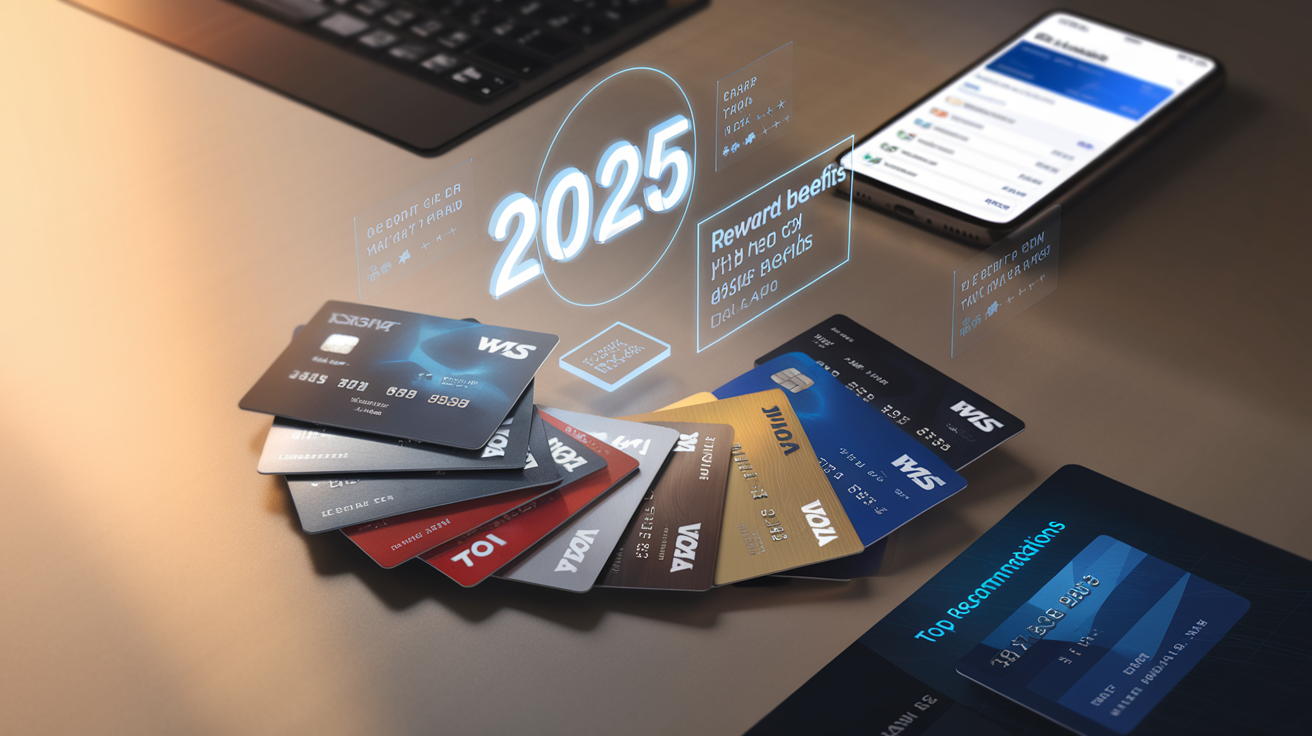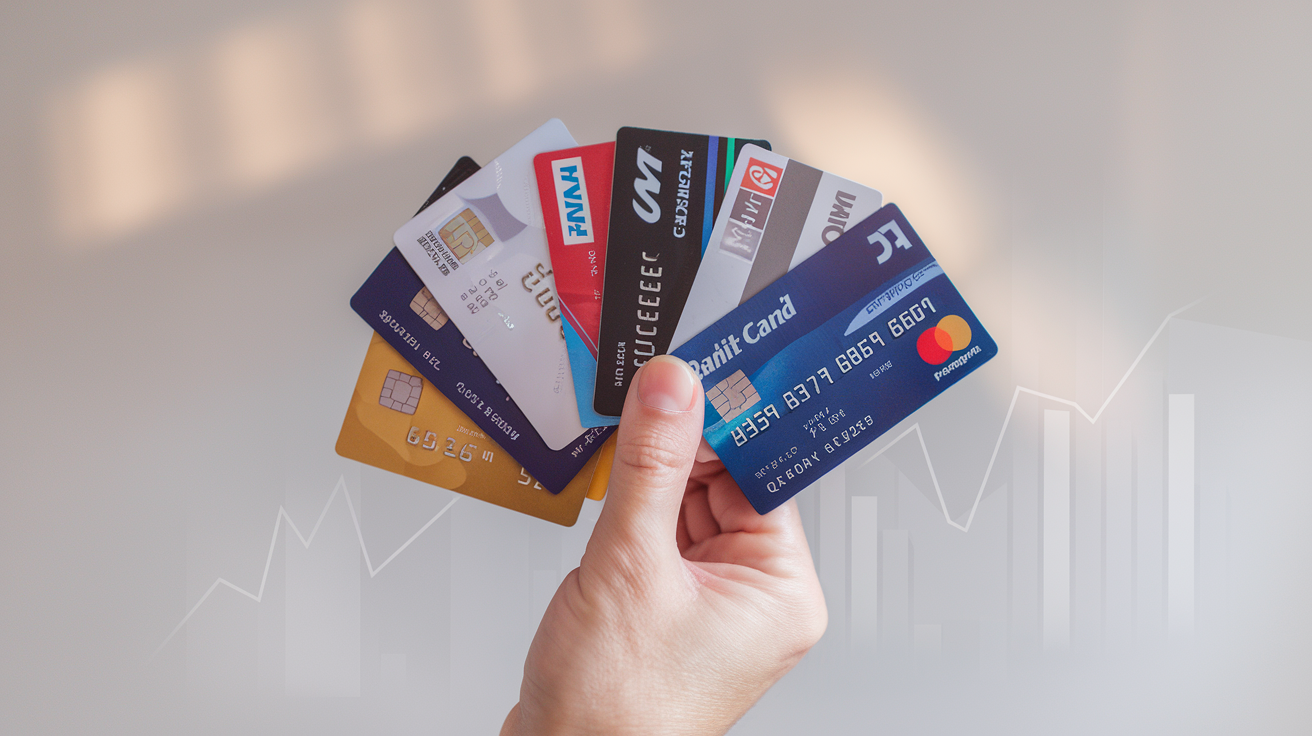
Finding Your Perfect Financial Companion: The Quest for the Best Credit Card
In a landscape of over 400 credit card options, finding the ideal card that aligns with your financial goals can feel overwhelming. Whether you’re seeking generous cash back rewards, looking to save on interest, building credit from scratch, or maximizing travel benefits, the right credit card can be a powerful tool in your financial arsenal. With industry experts dedicating over 27,000 hours to research in the past year alone, we’ve distilled this wealth of knowledge to bring you the most comprehensive guide to the best credit cards for 2025.
Why does your choice matter? The difference between selecting the right card versus settling for an average option could mean hundreds or even thousands of dollars in your pocket through optimized rewards, lower interest rates, and valuable sign-up bonuses. From the highly-rated Discover it® Cash Back card to the versatile Chase Freedom Unlimited® and the straightforward Wells Fargo Active Cash® Card, we’ll explore options tailored to diverse financial profiles and needs. Read on as we dive into the various types of credit cards, our top recommendations for 2025, essential features to consider, how to match cards to your unique situation, and which issuers consistently earn top marks for customer satisfaction.
Understanding Different Types of Credit Cards

A. Rewards Cards: Cashback and Points Systems
Ever noticed how some people seem to get free stuff just by spending money? That’s the magic of rewards cards. These cards give you something back every time you swipe.
Cashback cards are straightforward – spend $100, get $1-5 back depending on the card and category. Some cards offer flat rates (like 2% on everything), while others give higher percentages in rotating categories (like 5% on groceries this quarter, restaurants next quarter).
Points systems work differently. You earn points for purchases that can be redeemed for travel, merchandise, or statement credits. The Chase Sapphire Preferred, for example, gives you points worth more when used for travel through their portal.
B. Interest-Saving Cards with Introductory Offers
Got debt? These cards might be your new best friend. They offer 0% APR on balance transfers for periods ranging from 12-21 months.
The Citi Diamond Preferred and Chase Slate Edge are popular choices here. Just watch for those balance transfer fees – typically 3-5% of the transferred amount.
Some cards also offer 0% on new purchases, perfect if you need to make a big purchase and pay it off over time without interest piling up.
C. Credit-Building and Secured Cards
Bad credit or no credit? Don’t worry. Secured cards require a deposit (usually $200-$500) that becomes your credit limit.
The Discover it Secured and Capital One Platinum Secured are solid options that report to all three credit bureaus. Some even offer graduation paths to unsecured cards after responsible use.
D. Student Credit Cards for Young Adults
College doesn’t teach you about credit, but these cards can. Student cards have lower approval requirements and often include perks tailored to student life.
The Discover it Student Cash Back offers good rewards plus a statement credit for good grades. The Capital One SavorOne Student gives bonus cash back on entertainment and dining – because college isn’t all about studying.
Most student cards have no annual fee and include financial education resources to help you build smart money habits early.
Top Credit Card Recommendations for 2025

Best No Annual Fee Options
The credit card scene in 2025 is looking pretty sweet for folks who hate annual fees. The Discover it® Cash Back remains a standout choice with its rotating 5% cash back categories and that crazy first-year cashback match. Translation: whatever cash back you earn in year one, Discover doubles it. No caps, no fine print nonsense.
Chase Freedom Unlimited® continues to dominate with its straightforward rewards structure. You’re looking at 1.5% cash back on everything, plus boosted rates in certain categories like dining and drugstores. The best part? Those rewards never expire as long as your account stays open.
Both cards pack solid welcome bonuses that blow most fee-carrying cards out of the water. And neither will ding your credit score much during application thanks to their reasonable approval requirements.
Highest Cashback Rate Cards
The Wells Fargo Active Cash® Card is crushing the competition in 2025. With a flat 2% cash rewards on literally everything you buy, it’s refreshingly simple. No tracking categories or activation headaches.
What makes it exceptional is the combination of that high flat rate with surprisingly robust benefits. We’re talking cell phone protection, zero liability protection, and emergency cash disbursement if your card gets lost while traveling.
The sign-up bonus has gotten even sweeter for 2025, offering a substantial cash reward after meeting a reasonable spending threshold within the first months.
Premium Travel Rewards Cards
Premium travel cards in 2025 have evolved beyond just airport lounge access. Today’s elite cards offer personalized concierge services that can score impossible restaurant reservations and exclusive event access.
The rewards structures have become incredibly flexible, with transferable points systems that let you maximize value across dozens of travel partners. Some premium cards now offer up to 10x points on select travel purchases.
Annual statement credits have expanded beyond travel to include streaming services, fitness memberships, and even food delivery services.
Balance Transfer Cards with Long Introductory Periods
The balance transfer landscape has dramatically improved for 2025. The best cards now offer introductory 0% APR periods extending up to 21 months – that’s nearly two years to chip away at existing debt without paying a penny in interest.
Transfer fees have become more competitive too, with some cards charging as low as 3% compared to the standard 5% from previous years.
Look for cards that pair those long intro periods with decent ongoing rewards programs. This way, once your debt is handled, you’ll still have a valuable card in your wallet rather than a dormant piece of plastic.
Essential Features to Consider When Choosing a Credit Card

A. Annual Fees and Their Impact on Value
Credit cards with annual fees often freak people out. But here’s the truth – sometimes they’re worth every penny.
Think about it. A card with a $95 annual fee might seem expensive until you realize it gives you $300 in travel credits, free checked bags, or enough cash back to cover the fee three times over.
The key question isn’t “Does this card have a fee?” but rather “Am I getting more value than what I’m paying?”
No-fee cards work great for many people. They cost nothing to keep in your wallet and often come with decent rewards. Perfect if you’re just starting out.
But premium cards with hefty fees ($450+) can actually save you serious money if you use all their perks. Airport lounge access alone can be worth hundreds if you travel regularly.
My advice? Do the math. List out every benefit you’ll actually use and assign a dollar value. If it exceeds the annual fee, you’ve got a winner.
B. APR and Interest Rate Structures
The APR (Annual Percentage Rate) is only relevant if you carry a balance. Pay your card off in full each month, and you could have a 99% APR and it wouldn’t matter.
But if you ever carry a balance, even occasionally, this number becomes your worst enemy.
Most credit cards have variable APRs ranging from 16% to 28%, depending on your credit score and the current prime rate. That’s significantly higher than most loans.
Watch out for:
- Introductory 0% APR offers (great short-term, but mark your calendar for when they expire)
- Balance transfer fees (typically 3-5% of the amount transferred)
- Penalty APRs that kick in if you miss payments (often jumping to 29.99%)
Cash advances almost always carry higher interest rates and begin accruing interest immediately – no grace period.
Credit unions typically offer lower APRs than major banks. If you know you’ll sometimes carry a balance, prioritizing a lower APR over flashy rewards could save you hundreds.
C. Reward Programs and Redemption Options
Not all points are created equal. A card offering “5X points” might sound better than one offering “2% cash back,” but it depends entirely on what those points are worth.
The three main reward currencies are:
- Cash back – Straightforward and flexible, typically 1-2% on most purchases with higher rates in bonus categories
- Travel points/miles – Often worth more when redeemed for flights or hotels
- Transferable points – The most flexible; can be moved to airline/hotel partners or redeemed for travel/cash
Pay attention to redemption minimums. Some cards make you accumulate $25 worth of cash back before you can redeem anything.
Also consider your spending habits. A card offering 5% back on groceries is fantastic for families but worthless if you eat out every meal.
The best programs offer multiple redemption options without devaluing your points. Flexibility matters – your travel habits might change, but cash is always useful.
D. Sign-Up Bonuses and Welcome Offers
Sign-up bonuses can be worth hundreds, even thousands of dollars – but they come with strings attached.
Most require you to spend a certain amount within the first few months (typically $1,000-$4,000). Don’t chase these if you’ll have to spend money you weren’t planning to spend anyway.
Compare bonuses not just by points quantity but by actual value. A 100,000-point offer might be worth $1,000 with one program but only $500 with another.
The best strategy? Time your application when you have a large planned expense coming up – home repairs, insurance premiums, or holiday shopping can help you meet spending requirements without changing your budget.
Be aware of bonus restrictions. Many issuers (especially Chase with their “5/24 rule”) will deny you if you’ve opened too many cards recently. And most cards prevent you from earning a bonus if you’ve received one for the same card in the past 24-48 months.
Matching Credit Cards to Your Financial Profile

Cards for Excellent Credit Scores
That 800+ credit score didn’t happen by accident. You’ve worked hard for it, and now your wallet deserves some serious perks.
With excellent credit, you’re the customer credit card companies fight over. You qualify for the cards with the juiciest rewards, lowest APRs, and most impressive sign-up bonuses.
Look for premium travel cards offering:
- 50,000+ point welcome bonuses (that’s basically a free vacation)
- Airport lounge access (goodbye, uncomfortable terminal chairs)
- Statement credits for TSA PreCheck or Global Entry
- No foreign transaction fees
Or maybe cash back is more your style? The top-tier cash back cards give you:
- Up to 6% back on select categories
- Rotating quarterly bonuses that can hit 10% in specific categories
- Annual statement credits that often offset any annual fee
Don’t settle for basic rewards when you could be earning 2-5x points on everyday purchases. And definitely negotiate – with your credit score, you can often get annual fees waived or reduced just by asking.
Options for Building or Improving Credit
Credit score looking more like a bowling score than a beacon of financial responsibility? No shame – we’ve all been there.
Secured credit cards are your best friend right now. They require a security deposit (usually $200-$500) that becomes your credit limit. It feels like training wheels, but these cards report to all three credit bureaus, building your credit history with every on-time payment.
Some solid options include:
- Discover it® Secured (rare for a secured card: actual cash back rewards)
- Capital One Platinum Secured (potential for credit line increases without additional deposits)
- Citi® Secured Mastercard (relatively low security deposit requirements)
Student credit cards are another avenue if you’re enrolled in college. They typically offer:
- Lower approval requirements
- No annual fees
- Small rewards programs
- Credit education resources
Store cards can also work, but watch those sky-high APRs – they’re counting on you carrying a balance.
The golden rule: never miss a payment. Set up autopay for at least the minimum amount due. And keep utilization under 30% of your limit (under 10% is even better).
Strategies for Qualifying with Limited Credit History
The classic catch-22: you need credit to build credit. Frustrating, right?
Start by becoming an authorized user on someone else’s card (preferably someone who pays on time). Their good habits boost your score without you even using the card.
Credit builder loans are another smart move. These unusual loans hold your money in an account while you make payments, reporting those payments to credit bureaus. When the “loan” term ends, you get your money back, minus fees.
Try these approaches too:
- Apply for entry-level cards specifically designed for limited credit histories
- Consider retail store cards (easier approval, but use sparingly)
- Use services that report rent payments to credit bureaus
- Try pre-qualification tools before applying to avoid hard inquiries
Remember that banks and credit unions where you already have accounts may be more willing to approve you for their credit products. That existing relationship counts for something.
And be patient! Credit history takes time to build. Focus on consistent, responsible use rather than trying to game the system with multiple applications.
How to Choose Based on Spending Habits
Your credit card should work as hard as you do. The right card matches where your money actually goes.
Road warrior? A travel card with no foreign transaction fees and airport perks makes sense. Grocery store regular? Cards offering 3-6% on supermarket purchases will save you hundreds yearly.
Break down your spending for the last three months:
- Do you spend most at restaurants? Look for dining rewards.
- Commuter? Gas rewards cards return 3-5% at the pump.
- Online shopper? Some cards offer enhanced protection and rewards for digital purchases.
| Spending Category | Recommended Card Type | Typical Rewards |
|---|---|---|
| Dining out | Restaurant rewards | 3-5% back |
| Groceries | Supermarket cards | 3-6% back |
| Travel | Airline/hotel co-branded | 2-3x points |
| Everything else | Flat-rate cash back | 1.5-2% on all purchases |
Don’t be seduced by flashy sign-up bonuses if the everyday rewards don’t match your lifestyle. A $500 welcome bonus feels great, but a card that earns an extra 1% on your regular spending will surpass that value within a year.
And if your spending varies widely? Consider a flat-rate card offering 2% on everything. Simplicity often beats category juggling.
Customer Satisfaction and Issuer Reputation

A. Top-Rated Card Issuers (Discover, American Express)
When you’re picking a credit card, the company behind it matters big time. Discover and American Express consistently crush it in customer satisfaction surveys.
Discover has been killing the game lately. J.D. Power ranked them #1 for three years straight. Why? Their no-annual-fee cards, actual humans answering customer service calls, and that sweet cashback match for first-year users.
American Express isn’t far behind. They’ve built their reputation on premium treatment. Cardholders rave about their concierge services and how quickly they resolve disputes. Their Membership Rewards program is basically the gold standard for travel perks.
B. Customer Service Quality Considerations
The quality of customer service can make or break your credit card experience. Look for these telltale signs of excellent service:
- 24/7 availability through multiple channels
- Short wait times (under 5 minutes)
- Reps who can actually solve problems, not just read scripts
- First-call resolution rates (better issuers fix your issue the first time)
- Crisis handling (how they treat you when your card gets stolen)
Chase and Capital One have seriously stepped up their game here with robust dispute resolution processes and quick response times.
C. Digital Tools and Account Management Features
The best card issuers have tech that makes your life easier, not harder.
Mobile apps should do more than just show your balance. Top-tier features include:
- Instant purchase notifications
- Seamless integration with digital wallets
- Virtual card numbers for safer online shopping
- Spending analytics that actually help you track trends
- Easy reward redemption without jumping through hoops
- Instant freezing/unfreezing of cards
Citi’s mobile app lets you see your FICO score changes over time, while Bank of America’s virtual assistant, Erica, can answer complex questions about your account. These digital tools aren’t just nice-to-haves anymore—they’re essential for managing your credit effectively.

Choosing the best credit card requires careful consideration of your specific financial needs and goals. Whether you’re looking for rewards, building credit, or seeking low interest rates, there’s a card that matches your profile. Remember to evaluate annual fees, APRs, reward structures, and sign-up bonuses before making your decision, while also considering the reputation of issuers like Discover and American Express, which consistently rank high in customer satisfaction.
Your ideal credit card should work as a financial tool that complements your lifestyle rather than complicating it. Take the time to research thoroughly using trusted resources, compare options across different categories, and select a card that aligns with your spending habits and credit history. With the right credit card in your wallet, you can maximize benefits while maintaining healthy financial habits throughout 2025 and beyond.